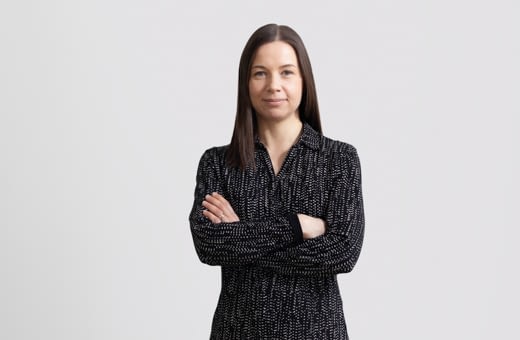In its joint sustainability commitments, the forest industry has set out its goal of reversing the decline of endangered forest species. In commercial forests, biodiversity is promoted with nature management. Its extensive range of measures is realised in everyday forestry as diverse practical actions. In addition, the forest industry promotes the voluntary protection of forests and peatlands. The progress report on the sustainability commitments provides more information on the concrete measures taken to secure biodiversity in commercial forests.
Biodiversity is the basis of sustainable forestry. That is why the forest industry actively develops its operations to secure biodiversity in forests in cooperation with the entire forest sector. The sites with the greatest natural value are excluded from the scope of forestry measures. Furthermore, there is a wide spectrum of measures that can be used to improve the living conditions of species in commercial forests.
One concrete action is to improve the state of a certain habitat with active management, increasing its biodiversity. Herb-rich forests and sunny and dry habitats, for instance, often need active management to maintain their biodiversity.
Case: Action programme for herb-rich forests promotes biodiversity
Nearly 50 per cent of the threatened forest species live in herb-rich forests even though they only account for a few per cent of the total area of Finnish forests. Since 2021, the Finnish Forest Industries Federation has implemented an action programme for the management of herb-rich forests, increasing the expertise of various operators in identifying and managing commercial herb-rich forests. The goal is that companies can more easily and uniformly offer forest owners management measures that promote biodiversity in herb-rich forests. More than 700 people interested in managing herb-rich forests have explored the online course and manual prepared by the project. The herb-rich forest action programme is part of the Forest Environment Programme of the Finnish Forest Industries Federation.
Another good example of active forest management measures is controlled burning, which improves the living conditions of species dependent on forest fires.
Case Tornator: Burning felling areas expands the range of species
Controlled burning is one way of promoting biodiversity in commercial forests. The most significant finding in the beetle and flat bug survey conducted in the Ruokolahti burning site in 2020 and 2021 was the Aradus montandoni. The species is very rare in Europe. In Finland, it was first discovered in 2005, which is why it has not yet been possible to assess its conservation status. The species survey showed that burning felled areas and leaving behind a large number of retention trees attracts a wide variety of insects dependent on forest fires and promotes the retention of demanding and endangered species in commercial forests as well.
A large number of forest species are dependent on wood in varying stages of decay. The amount of decaying wood can be increased in commercial forests by ensuring that retention trees are left in the forest and existing decaying wood is retained. An even faster way to increase the amount of decaying wood is to make high biodiversity stumps.
Case Metsä Group: High biodiversity stumps increase the biodiversity of forests
A 2021 survey by a researcher from the Natural Resources Institute Finland observed that high biodiversity stumps house a considerably higher number of species compared to normal stumps left behind after felling. Moreover, all the demanding species discovered in the survey were found in the high biodiversity stumps. High biodiversity stumps are an important nature management activity as they increase the number of species dependent on decaying wood in forests. Metsä Group has made two high biodiversity stumps per hectare in all its felling methods since 2016 and increased the number to four in 2020. Making high biodiversity stumps is a voluntary activity for forest owners. In 88 per cent of all wood trades in 2021, the forest owners decided in favour of making high biodiversity stumps.
In the forestry context, forest species are also protected by taking them into consideration directly. Companies sourcing wood have access to extensive databases regarding the places where endangered species appear, making it possible to protect these species when planning and implementing measures. The special needs of different species are taken into consideration by targeting felling into less verdant areas during the bird nesting season, for instance.
Case Stora Enso: Bird nesting season observed more carefully
Most bird species favour lush forests rich in broad-leaved trees during the nesting season due to the ease of finding cover and food. Stora Enso has decided not to carry out any felling at forests with a large number of broad-leaved trees during the most important nesting season. The information system automatically excludes sites containing more than 50 per cent broad-leaved trees during the nesting season.
For certain species, such as the Siberian flying squirrel and large birds of prey, there are specific instructions on how to protect these species as part of forestry.
Case UPM: The protection of the Siberian jay and wood sourcing can be combined
The Heinävesi forest holdings of UPM feature several Siberian jay territories that are usually quite rare in southern Finland. We developed a model to combine biodiversity efforts and wood sourcing with an external expert to protect the territories of the Siberian jay even better. The model includes measures such as conducting preliminary landscape planning, using continuous-cover silviculture and restoring old spruce mire. So far, UPM has protected nearly 300 hectares of the known core territories of the Siberian jay in its forest holdings.
In 2012, the forest industry agreed on joint sustainability commitments. The sustainability commitments for 2025 are exceptionally wide-ranging. In addition to environmental sustainability, they also cover the areas of social and economic responsibility.
The recent progress report shows that the implementation of the commitments is moving in the desired direction. You can read the progress report and its dozens of case examples here.






